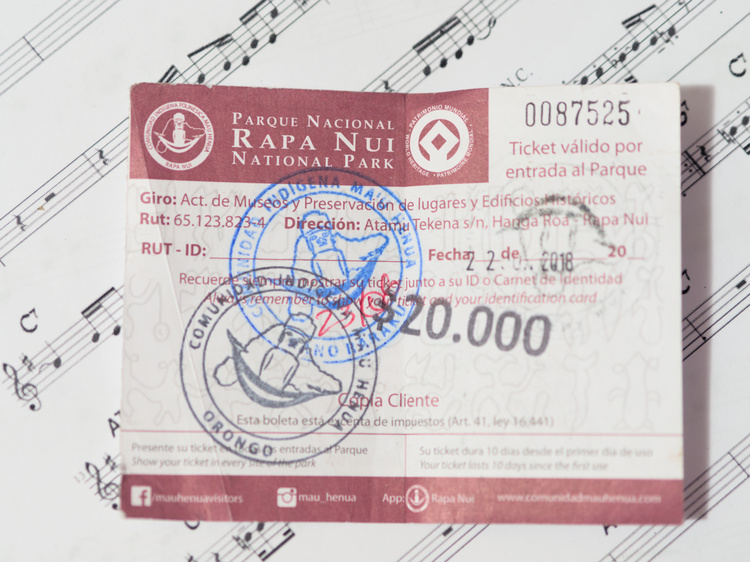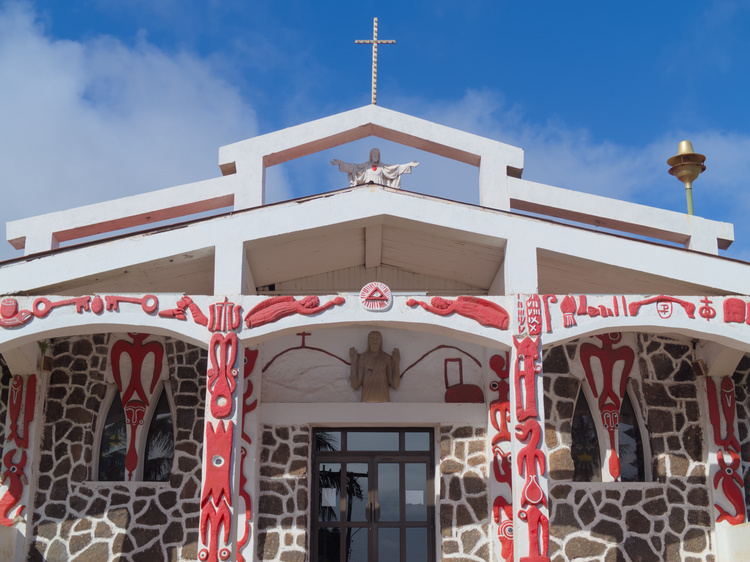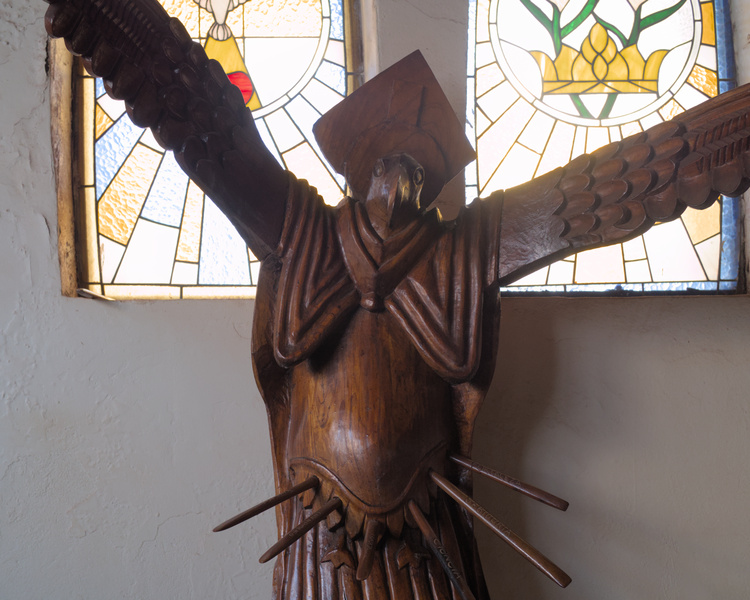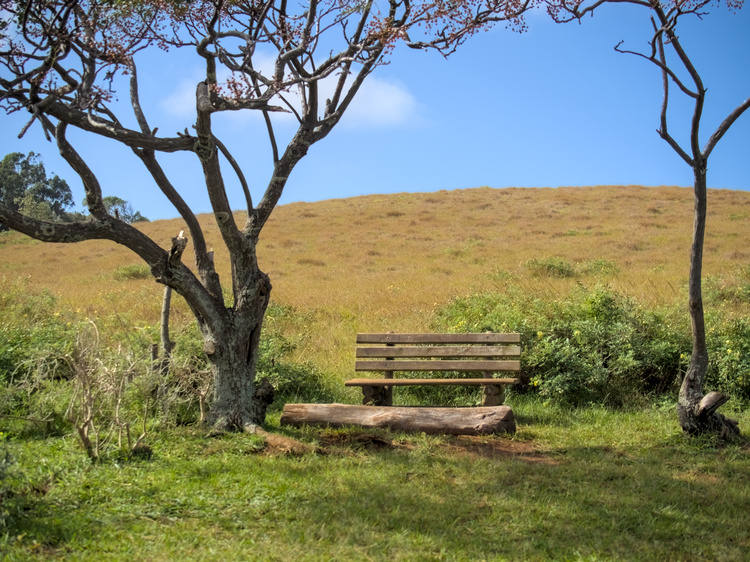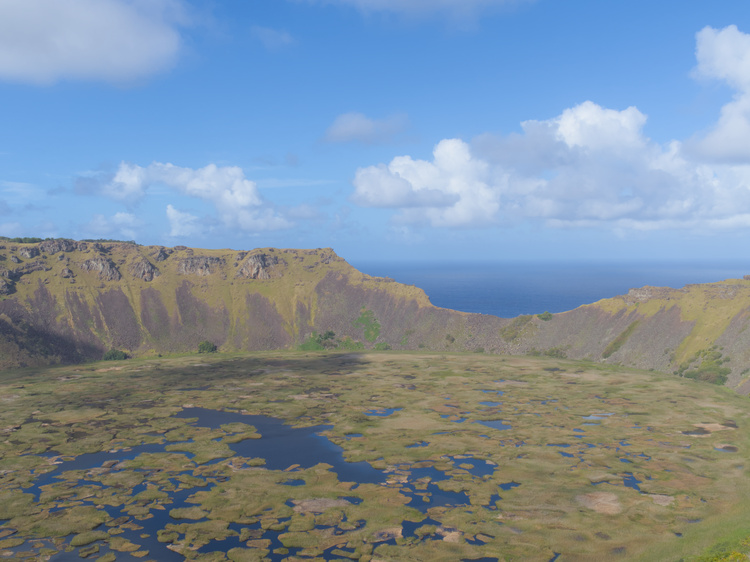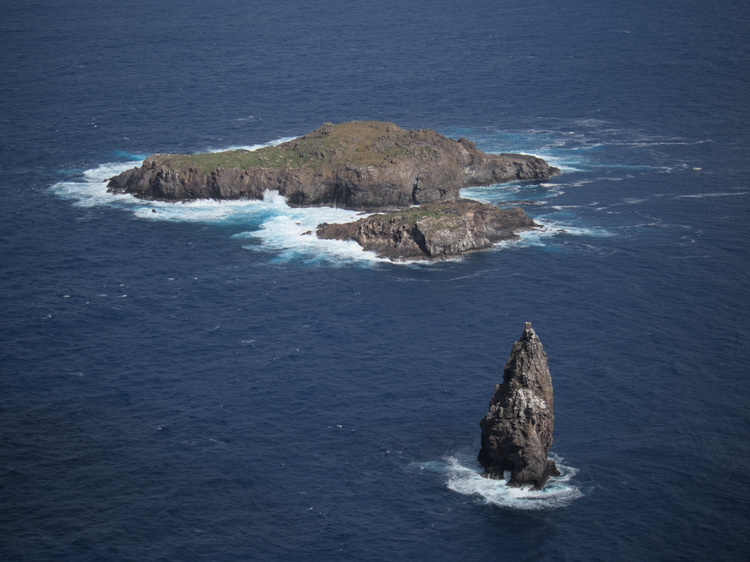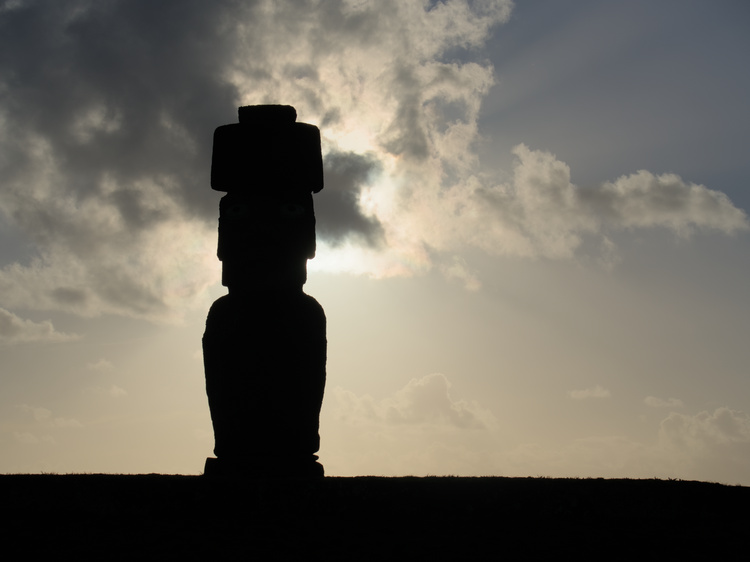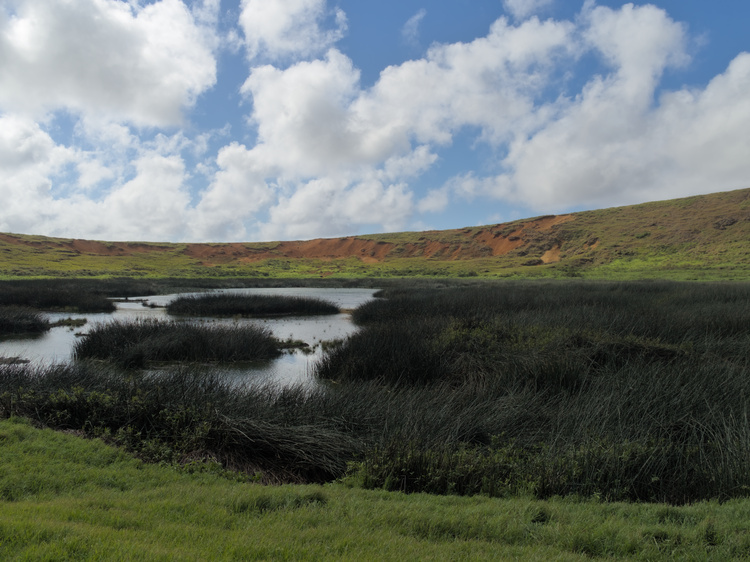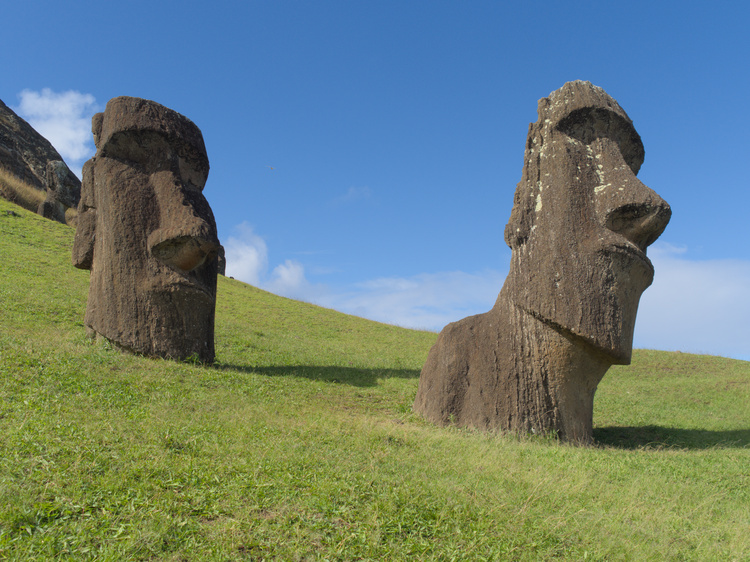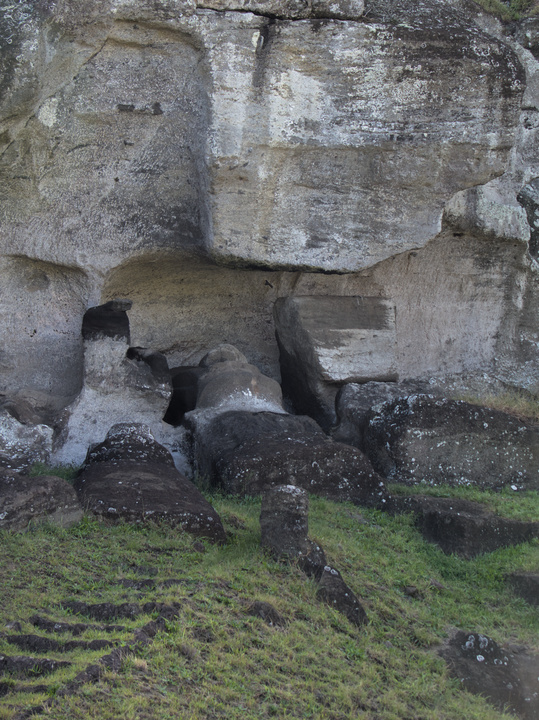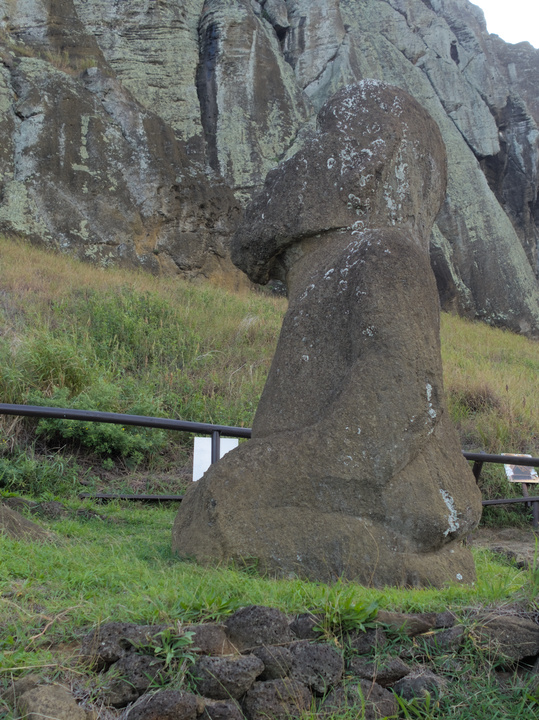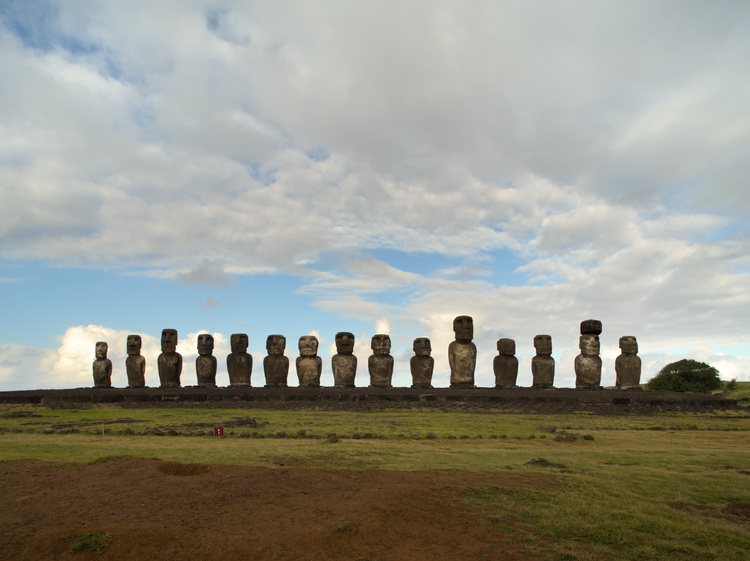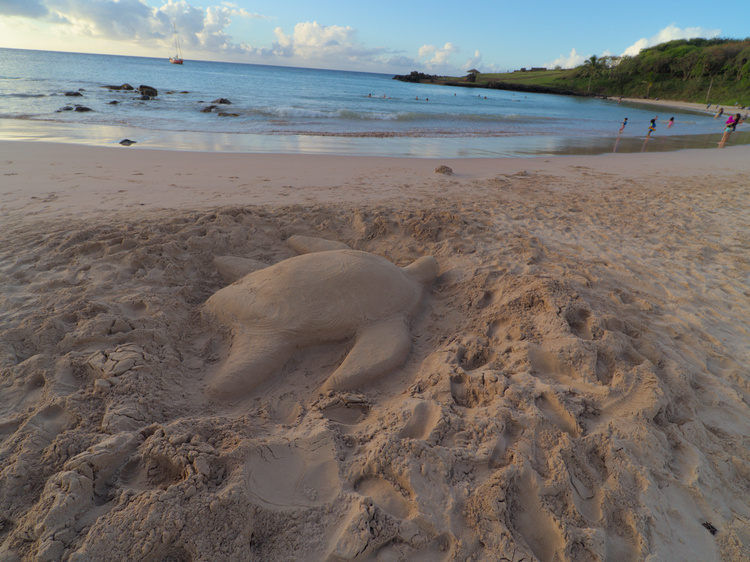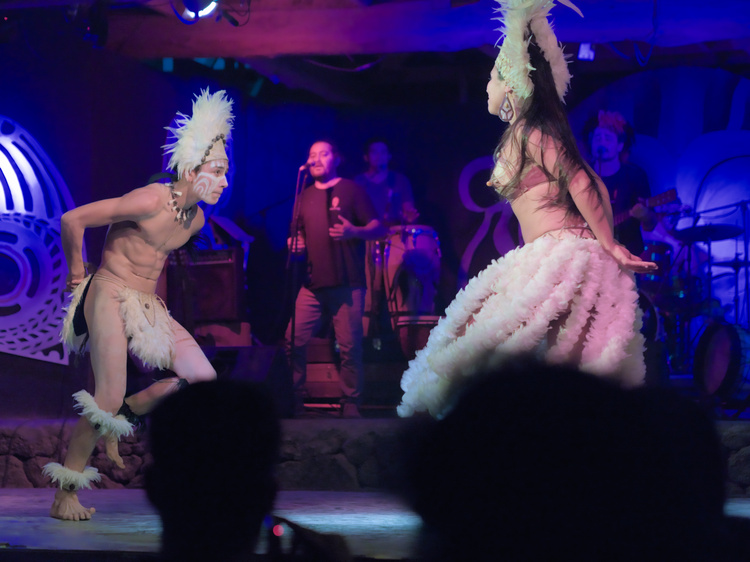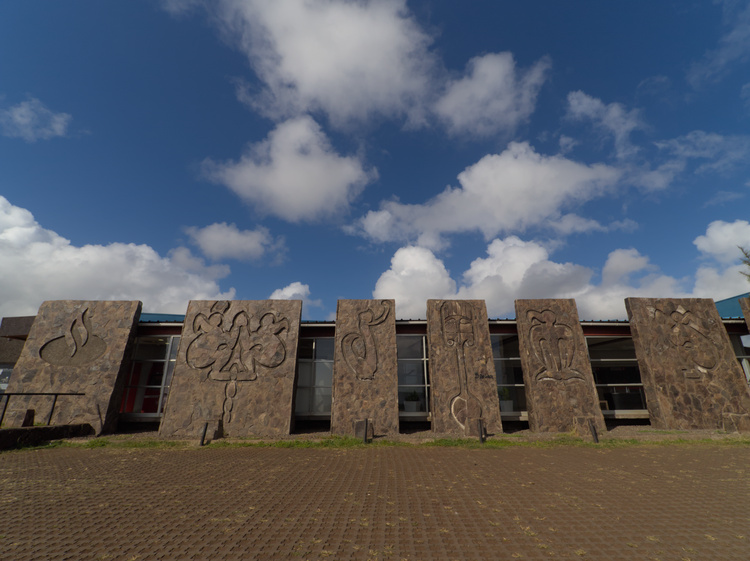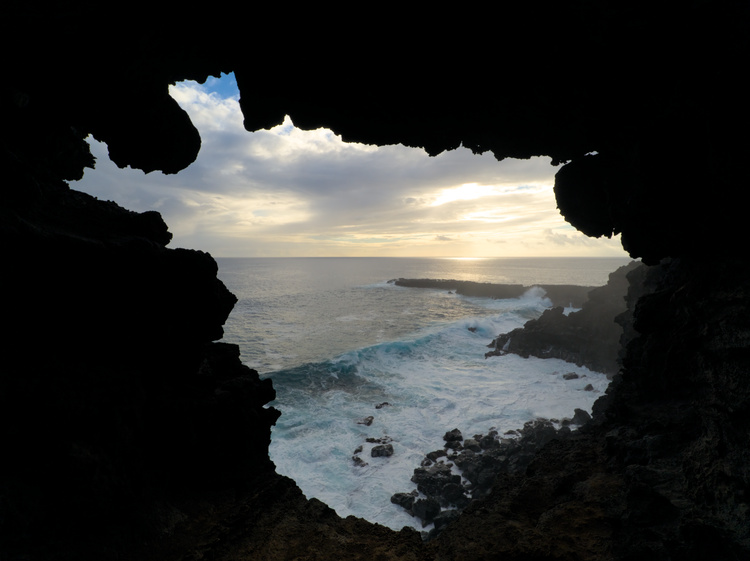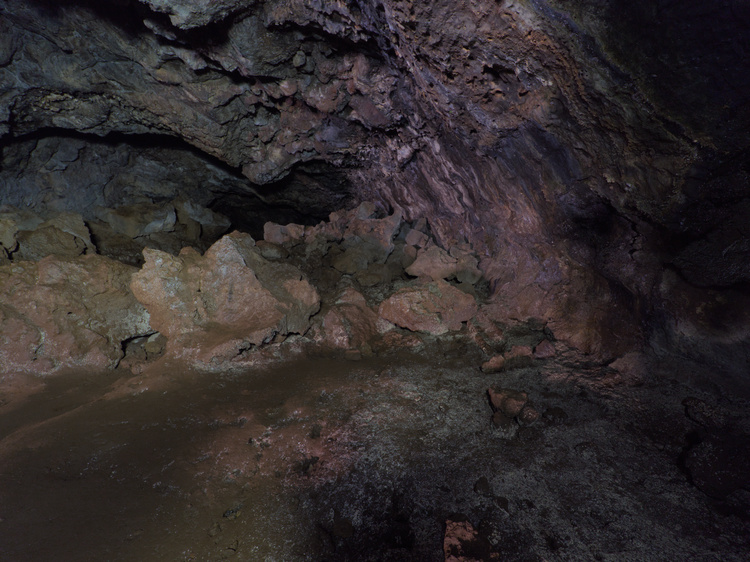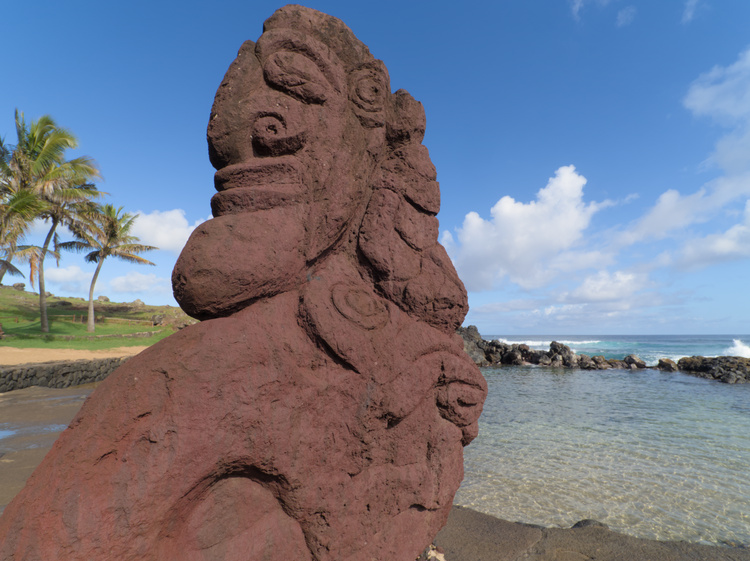After our visit to Hawaiʻi, we found ourselves again in a Polynesian island under the administration of a far away country: Rapa Nui 1. The island has a volcanic origin, with an inactive or extinct volcano in each one of its three vertices.
Because of a coordination mistake with Karen ❤️, I bought my return plane ticket for a day after hers, so my last day stay was a solo adventure.
Day 1: Exploring Hanga Roa
Right after getting down of the plane, we could buy the tickets for the Rapa Nui National Park2, which contains several protected areas of the island, especially those related to moais and other archaeological sites.
Since our lodging was near enough, we went by foot. Once we settled up, we went out to know Hanga Roa, the only urban center of the island. We first arrived to Santa Cruz Church3. This church stands out by its mix of Catholic symbology with some of the Rapa Nui mythology.
Then, we went to take a look into the different stores in Hanga Roa, to see options for tours or car rentals, but we ended up in a cafeteria where had Po’e, a pumpkin and banana based dessert.
Day 2: Rano Kau, Museum and Ahu Tahai
On the second day, we went to Rano Kau volcano4, located south of Hanga Roa. To reach the crater one can go by car or by foot. Rano Kau is an extinct volcano and its crater offers protection from the elements to a wetland.
Also in the volcano is Orongo5, a ceremonial village tied to Make-Make6 worshiping and the bird-man (tangata manu) competition7. The main part of the tangata manu ritual consisted in a race of representatives of every clan to get the first egg laid by a manutara8 in the Moto nui islet, near Orongo.
Orongo was also the home of the Hoa Hakananai’a moai9, which has various tangata manu related petroglyphs in its back. Sadly, this moai was subtracted by the English navy and it is on display on the British Museum, along other artifacts stolen around the world 10.
Once we came back from Rano Kau, we went for lunch and then we visited the Father Sebastian Englert Anthropological Museum11. The museum gathers the Rapa Nui culture history and has been important in the preservation of the archaeological heritage of the island. The museum collection contains the only female moai known today.
In the evening, we went to see the moais in Ahu Tahai12. There were two dogs nearby playing with some volcanic rocks, asking people to play fetch the rock with them, but then not wanting to give back the rock.
Day 3: Rano Raraku, Ahu Tongariki and Anakena
To begin our third day, we visited Rano Raraku13, a volcanic crater that was very important in the moai carving process, since the material for moais was taken from quarries located there.
Our next stop could be seen from Rano Raraku: Ahu Tongariki14. Containing fifteen moais, it is the ahu, or ceremonial platform, that contains most moais in the island.
Next, we arrived to Anakena 15, the beach where the Polynesian chief Hotu Matu’a arrived to the island, according to the Rapa Nui tradition, spear heading the first settlement. Anakena differs from the rest of Rapa Nui rocky coast and it is one of the tw sandy beaches in the island.
To finish the day, we went to the music and dance show of the Maori Tupuna group 16. They keep the Rapa Nui traditions using their original music and choreographies.
Day 4: Puna Pau and Ana Kakenga
The last stop along Karen was the Puma Pau17 quarry. This is the only place on the island where the red rock that was used to make the pukao of the moais can be obtained.Pukao18 represent the hair buns that the inhabitants of the island used.
After parting company with Karen in the airport, I took another stroll in Hanga Roa before going to my new lodging.
My new host recommended the Ana Kakenga cave19 as a good destination to see. The cave is located North of Hanga Roa and it originated from volcanic activity. In the pas, it was used as a covert, so its entrance was reduced, to control the access to it. The cave has to openings facing the sea, and from one of them, you can see the two nearby islets: Motu Tautara and Motu Ko Hepoko.
I went there by foot, but after a few minutes of walking it started to rain. I was lucky that I brought my umbrella, but the mud was unavoidable.
Day 5: Bonus
I spent most of my last morning on the island searching for some souvenirs that I was asked for. I avoided the typical crafts fairs and went directly to buy to some artisans we saw some days ago. I also took some last photos in Hanga Roa, one of which will close this entry.
